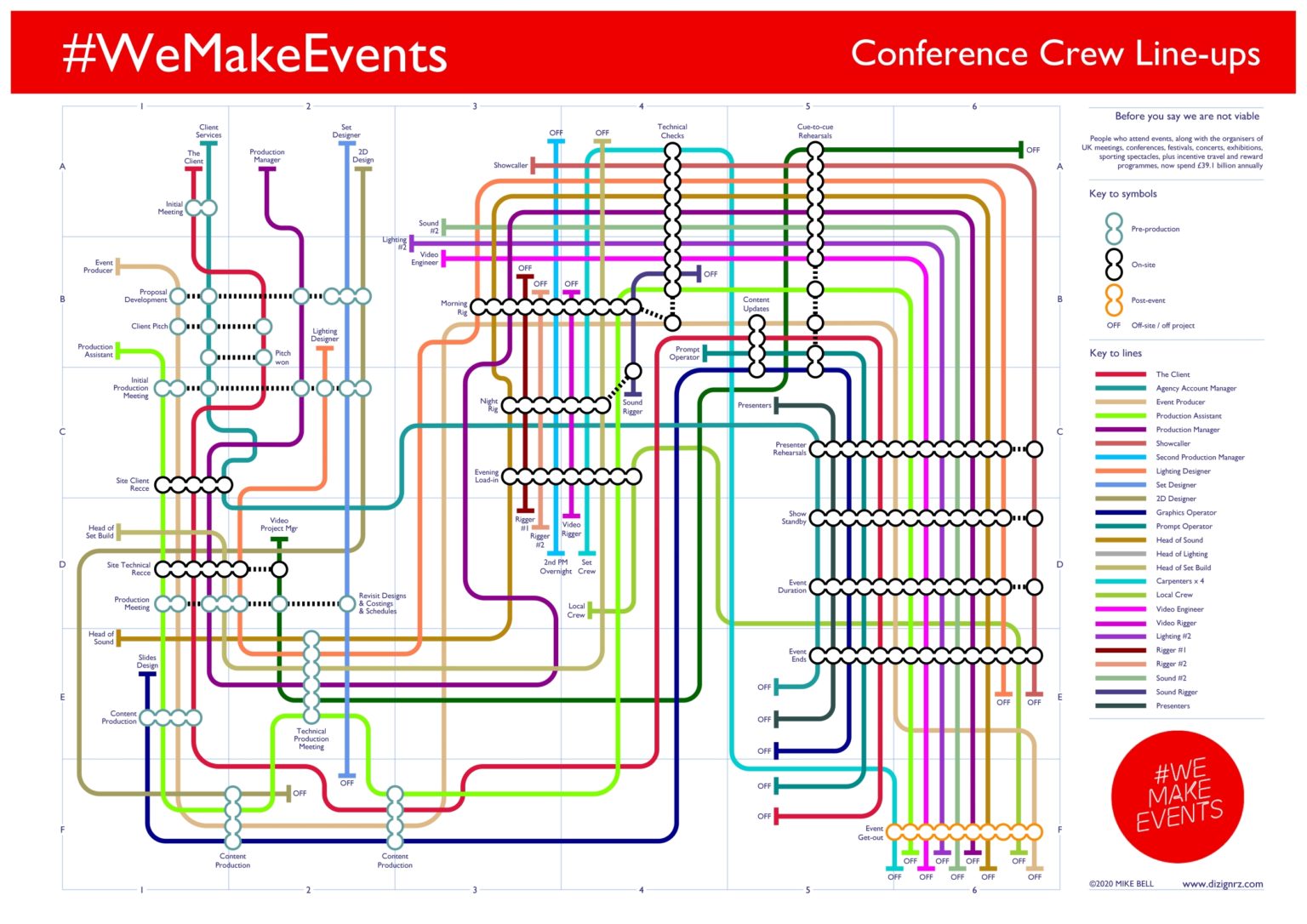News
20 Oct 2021
RISE Up – The funding programme investigated

Subscribe to CX E-News
It’s been a long, dark winter for us all. Seasonal woes seem insignificant in light of extended home detention, enforced workplace closures, and endless grief that we’ve endured in the fight against an unseeable menace. At times, it has felt like there is no end in sight.
Except, a few rays of light are poking through. The social handbrake is being released and I detect a hint of showtime in the air. Not so much this year as next, but gigs nonetheless. How do we keep alive until then?
If you don’t have deep pockets (any more), keep putting your hand out for everything on offer, state or federal.
What is RISE?
After a year of apparent neglect, I was heartened when the federal government finally announced some entertainment industry specific support. Restart Investment to Sustain and Expand (RISE) Fund was established to reactivate the arts and entertainment sector. In early 2021, $200m of public money was allocated to this pool.
Doled out in a series of batches, private and public groups have been encouraged to apply for grant funding within a bunch of constraints. Primarily:
“Organisations with the primary purpose of the arts and entertainment that can demonstrate that in the absence of this funding, their activity would be substantially less likely to proceed due to a constrained availability of finance as a consequence of COVID-19.”
So, basically the entire entertainment production industry you would think. One of the allowed activities under RISE is “purchasing or leasing essential equipment for events, such as sound or lighting equipment.” Surely this qualifies most production houses?
But no, we have to wait until the gear is rented and the diva has sung. While this fund was set up with good intent, poor implementation has meant that much of the money released will pad the pockets of the big players while workers and supply chains see nothing until a show actually goes ahead. Most of these are not due until 2022.
RISE structural problems
There are a few issues to be addressed in explaining why this hasn’t worked well. First, not all live shows necessarily follow the classical ‘arts model’, where large tranches of funds are sought annually to sustain an artistic company. This might work for a few large and well-established players with long lead times on their productions but not the bulk of the entertainment scene.
To this end, RISE is project based, a more appropriate thing you might think. But the projects (shows, installations and tours) all require a governing entity that coordinates artists, suppliers, technicians and associated providers; hardly a role for the production supplier to take, as someone usually in the middle of the supply chain.
Following classic neo-liberal dogma, feed the head and the body prospers. This fund is distinctly designed to trickle down from the top. As we’ve seen elsewhere across the economy, this concept does not work. So far, it’s not trickling anywhere except down our legs. For the bulk of the supply chain, this fund is so far more like a golden shower than handshake. Gee, thanks Canberra.
The next major impediment to this working as supposedly intended is the traditional model of recompense on gig completion, or “no show, no pay”. Promoters have already trousered millions of grant money, but workers and suppliers won’t see any of this until after the doors are open and the show has run. When will that be? How do they pay their bills in the meantime? How many have any financial fluidity left? Those still around have burned through cash reserves long ago. How do they even feed themselves?
Traditionally, we gig folk are excellent money managers. We have thrived on our own, without any sort of government or industry assistance. Until now. Now, we really, really need help. Unfortunately, this gravity seems not to have filtered through to the decision makers.
Who makes the decisions?
RISE is administered by the federal Arts Department under advice from the Creative Economy Taskforce. Drawn from a variety of industry notaries representing arts organisations, promoters and festivals, it is light-on in direct delegacy from coalface workers.
So, we have a bunch of bureaucrats with little idea of how our world works being advised by folk who haven’t dirtied their hands on a roadcase in years, if ever. I am sure that they are well intentioned, but I don’t see broad enough representation.
Where has the money gone?
With ~75% of the RISE purse already emptied, and over 2,000 applications to date, 370 have been successful. It has been spread over a wide variety of organisations, from cultural stalwarts like Womadelaide, through the large concert promoters and down to individual touring acts.
I’ve crunched the numbers at length and allocations seem to be roughly in line with my understanding of industry deconstruction. However, many have still missed out and some that succeeded have raised more than a few eyebrows. One case highlighted elsewhere in the media is the Maninjup – Gatsby Skyline Showcase. Operators with little prior commercial show experience get allocated $620k+ for 200 punters per week in a remote population of 4,000. On an untested concept, no less. Experienced and road hardened operators missed out while first timers get $600k+ for a pipedream! Seems a little unbalanced to me…
Where hasn’t the money gone?
Just like in the natural world, the top of the food chain has hoovered much of the spoils. I’ve canvassed widely across the industry and only unearthed two instances of supply houses guaranteed (or being included) in budget projections for grant applications. This may change as the 33% rule is enforced, but it still amounts to 2 percent of sweet FA.
So far, only a miniscule proportion of production companies are guaranteed anything. Peking Duk and Rone are the only grant winners I am aware of publicly putting budget aside for specific production industry help. There may be more, but they are not obvious to date.
Some applications were rejected for spurious reasons. I heard of one applicant rejected for “making too much profit” even when they specified rolling back all profits over a multi-year plan. Another rejected for “too much production component”, even though it was costed as per pre-pandemic breakdowns. One feedback gem was “Oh, we didn’t read your case properly and, yeh, you were right. Oops. Try again in the next round.” Bureaucratic ineptitude or too few workers in a hollowed out public service?
Either way, I’m not getting the warm fuzzies of post-coital trickle down just now; more like the looming dread of a late-night souvlaki gone wrong kind of trickle.
Where are production companies and crew at?
On their own, as ever. If they fold before the world turns again, where are the promoters going to hire their PA, lighting and video gear from? Who will provide the staging, seating and other necessary show accessories? Will there be anyone left who knows how this gear works, let alone operate it with flair?
As we all know, many of the personnel who will be crewing these shows are self-employed. Have ABN and passport, will travel. Except, the latter is no use right now and the former is a bigger number than your bank account.
Even in good times, only a select and/or elite few might be so lucky to see an advance or retainer. If that is happening now, they are smartly staying mum. As ever, the bulk of the roadcrew workforce are grafting hard just to stay alive right now. Many have already walked to something more dependable.
Why is it so?
Because the RISE funding model is wrong. Giving all the readies to the cats at the top, or those in the know, is exactly the same mentality that underpins countless federal funding decisions.
In fairness, like JobKeeper, this is all a work in progress and feedback seems to have been taken onboard by the RISE administering body. The addition of the “33% production clause” is welcome relief but, only implemented for batches 5 and beyond (not retrospectively), it may be too little, too late. The bulk of the money is already allocated.
Worse, I have heard of lobbying efforts from various parties to rescind this clause – the only time we have been explicitly included. That’s a sad state of affairs for the CX readership.
Here’s some real-world industry feedback for the big wigs – how comfortable will you feel at your next photo opportunity when the mic takes off with loops of 4kHz @ 100dB? Oh, that’s right, you shafted all the good operators and now they’re driving forklifts.
Where to next?
There’s still $40m or so in the kitty. Batch 6 and beyond offer promise of late funding for our overlooked corner of the shed. How this gets to those who need it most, I do not know.
Governments: Fix the model – it is broken. It does not reflect how the industry truly works. Listen to the feedback.
Suppliers and workers: Lobby up the chain for up-fronts. Lobby to get included in their budget in writing. Help them with production quotes to expedite this.
Everyone: Lobby your local MPs. This article is being sent straight to mine on publication. Maintain the rage.
RISE UP
Until the gigs start regularly happening and density restrictions approach a realistically profitable number, this inequity is going to continue. Until then, you can either bend over and take it or campaign against the unfairness of RISE.
Perhaps it is time for production companies and the technical crew that work with them to rise. Rise up against the unbalanced allocations of RISE grants. Rise up against CET and its inadequate response. Rise up against the wooden eared dunderheads of our governments.
Yep, another round of ‘kicking against the pricks’. But, if we don’t speak with a loud voice, we won’t get heard. And the fat cats will take all the loot. Again…
Harness the Rage In Supply Economy – get up and get up ’em.
Subscribe
Published monthly since 1991, our famous AV industry magazine is free for download or pay for print. Subscribers also receive CX News, our free weekly email with the latest industry news and jobs.




